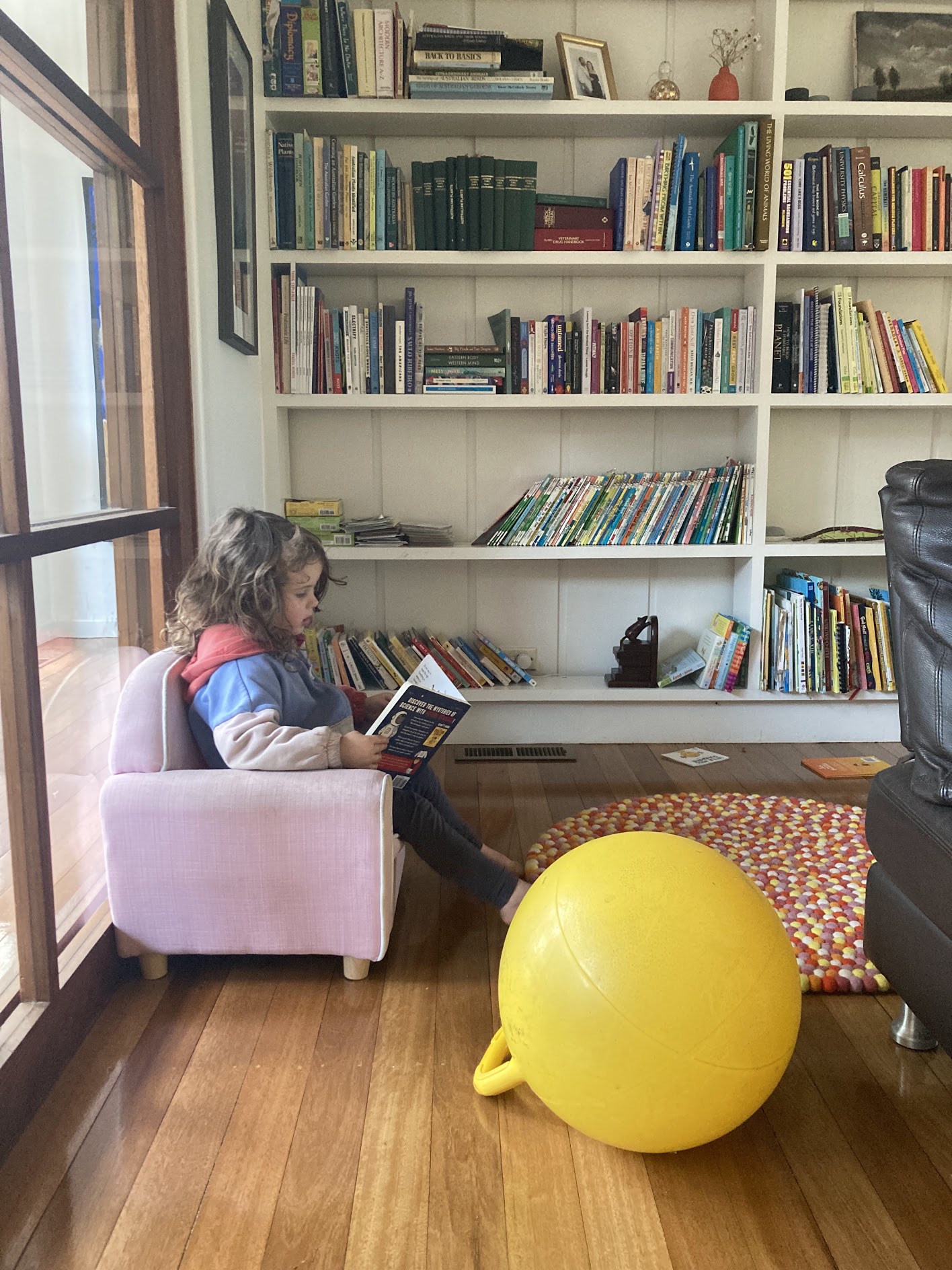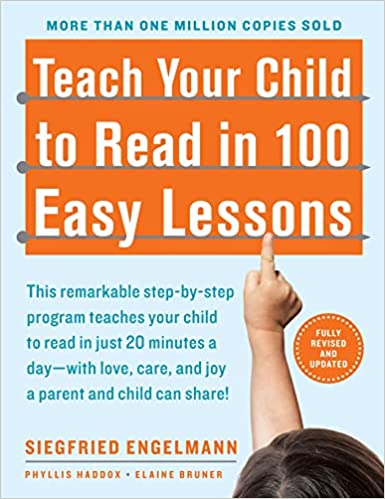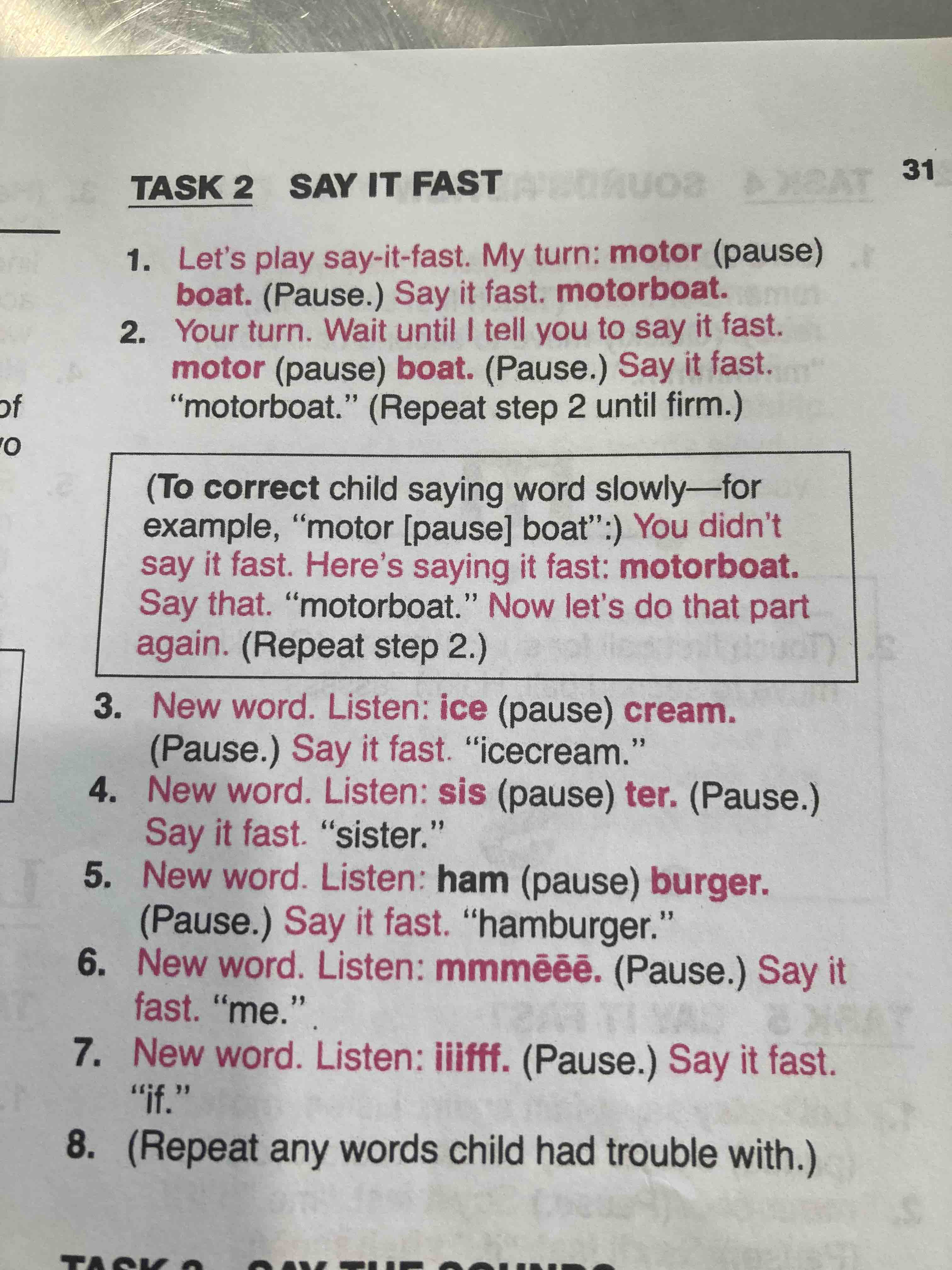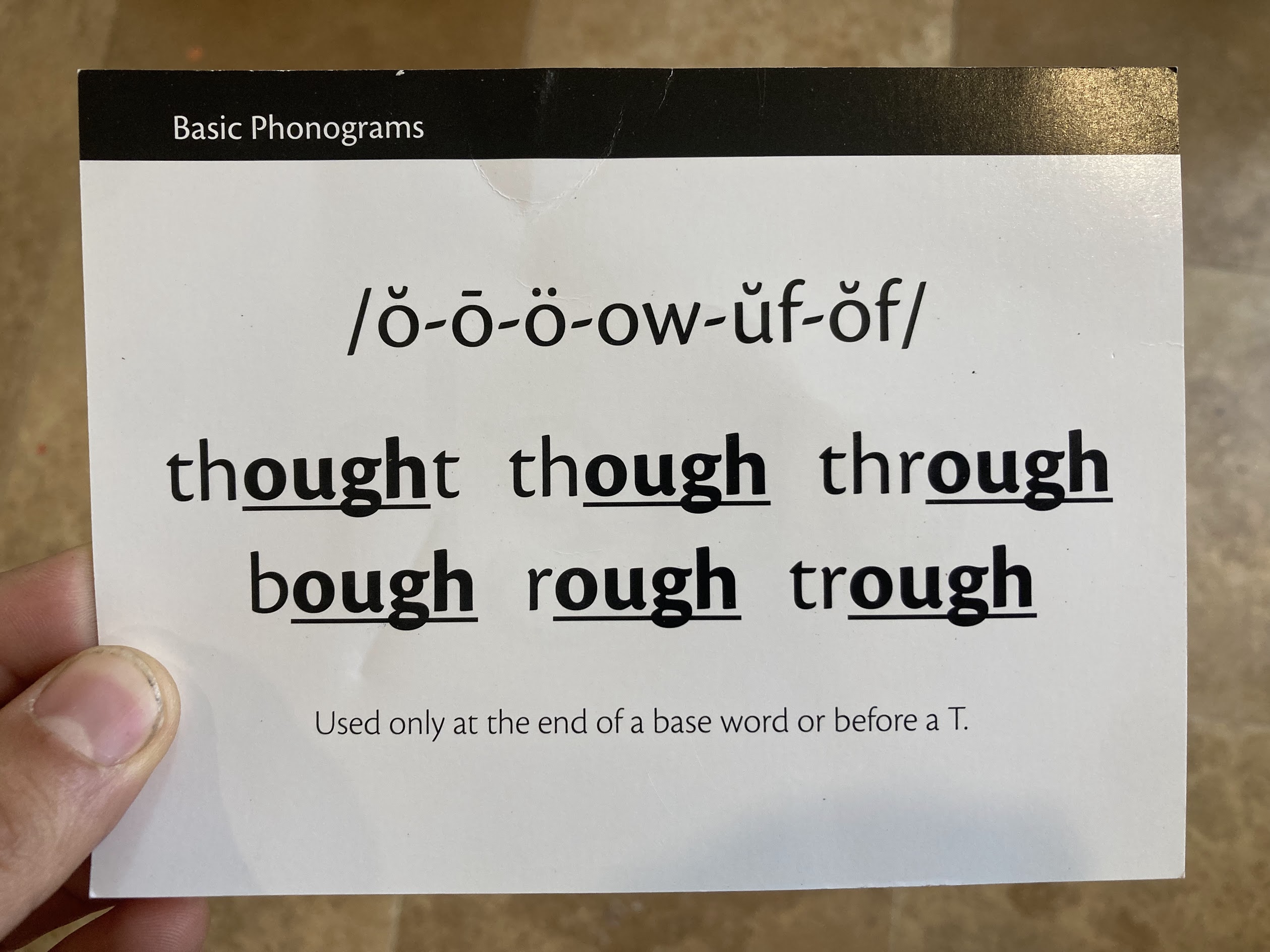My daughter (“G”) started learning to read shortly after her third birthday, and was independently reading simple chapter books around six months later. Below is my account of this period, primarily for the benefit of curious friends, but also to aid my memory for when it comes time to teach my next child 😅
Why start young?
The mainstream view of literacy seems to be that it’s absolutely critical that children learn to read but that they should do so through a tedious drip feeding process starting no earlier than kindergartenEven this is considered too early by Waldorf schools, which follow Rudolf Steiner’s absurd, mystical belief that children are only ready to read when they begin losing their primary teeth. and extending for years thereafter.Consider the typical person who received 12+ years of conventional education say a decade ago. What did they retain from school? I would suggest that it is little more than basic literacy and numeracy, which would imply that schools take around 6 years to teach reading and writing, and 6 years to teach arithmetic.
Obviously I disagree, and while I doubt this account will persuade skeptics, I will briefly address two common concerns about early reading.
But first, a photo:

If this picture of a young child who’s taken herself off to read a book fills you with burning rage or pity or really any negative emotion, could I kindly ask that you stop reading now?
Still here? OK, great.
A common refrain is that children shouldn’t learn to read “before they’re ready”.
I agree that no child should be pushed into learning to read. I am also sincerely in disbelief that people with children of their own could imagine me somehow coercing a 3-year-old into learning to read when I can’t convince her to, say, wear clothes outside in winter. Of course G was interested in books and eager to learn to read, otherwise she simply wouldn’t have succeeded.
That being said, I do suspect that more kids are eager to learn at a young age than is commonly believed, since parents are biased by the mainstream view that reading should be taught later or by schools.Some relevant context is that we plan to homeschool our children, so we expected to teach them to read ourselves anyway. This likely made us more attune to cues that our child was ready to read: we simply weren’t mentally delegating that responsibility to a future school.
A related complaint is that kids will learn “eventually, anyway”.
I certainly agree that it’s statistically unlikely that G would have ended up as an illiterate adult had I not actively helped her learn to read. There is however an advantage to starting early: unlike say learning to tie one’s shoelaces, reading is not a terminal skill. Learning earlier results in better and more independent access to the knowledge contained in books, as well as more years of experiencing the joy of reading. A child who learns to read early is also more likely to see the process as exciting; one who learns it late may see it as a chore.As Matt Bateman puts it: “it is more exciting for a toddler to be able to put on her own jacket than it is for an older child.”
Our process
In retrospect, we really just did four substantial things. Our process was to:
- Learn the most common phoneme for each letter
- Learn to blend these into simple words
- Learn to read harder words: secondary phonemes, common digraphs, and the common pattern of “silent e” indicating a long vowel sound
- Practice intentionally for 30-60 minutes a day
Notably absent from this list are “develop pre-reading skills” and “drill sight words”, both of which dominate some reading programs but were unnecessary for us if not totally misguided.
Learning the most common phoneme for each letter
Well before we started intentionally learning to read, my wife taught G to recognize all of the letters in English, not by name but by the most common phoneme (e.g. the sound of a in “at” rather than “ate”). She did this just in the course of day to day play, with toy blocks and a letter puzzle and occasionally crayons and paper.
Most parents realize they ought to teach their kids the alphabet, but some assume that this means teaching the names of letters. Unfortunately it’s not very useful—and perhaps even distracting—for a kid who’s just learning to read to know that W is referred to by adults as “double-u” or even that A is referred to as /eɪ/. We used phrases like “this says w like in wiggle” or even “this ‘is’ ah like in apple”.I initially thought it may have been confusing to use the word “is” when connecting a letter to a phoneme, considering that we would later teach secondary phonemes for the same letter (as well as letter names) but it was easier not to be too strict about how we phrased things, and everything turned out fine. I also read a few times that it was important to really isolate the consonant sounds (e.g a pure “m” rather than “muh” or “mah”) but we weren’t super strict about this and again things turned out fine.
I should mention that G was interested in learning these letter sounds at 18-24 months of age, and remembered each after a few exposures. I realize that both her level of interest and recall ability may be somewhat unusual at this age, so your experience may vary. That being said, I’m confident that kids are more interested in what sounds letters make than in our adult names for them, let alone our arbitrary conventional ordering for those names… i.e. please don’t try to teach the ABC song at 18 months, fail, then conclude that your child is disinterested in letters.
Two things we did around this time that don’t seem particularly valuable in retrospect are (i) reading “alphabet books” (i.e. books that emphasize words that begin with each letter, grouped together); and, (ii) spending time on Khan Academy Kids. Our kid enjoyed both, and they generally served to reinforce what she learnt otherwise, we just didn’t see the same kind of direct progress as we did through playing with blocks etc.
Reading simple phonetic words
G knew her letter sounds by 2, but for the next 12 months I only gently explored the idea of teaching her to read, mostly because I assumed this was too early.
I happened to have the book Teach Your Child to Read in 100 Easy
LessonsIf I had to reduce this article to a single sentence,
it would be “use the 100 Easy Lessons book and follow the script!”
 and one day I spontaneously tried a couple of lessons without properly
reading the instructions. It didn’t land, and I perhaps incorrectly
concluded that it was simply too early. In retrospect I believe it would
have been fine had I better known how to use the book—more on that
later.
and one day I spontaneously tried a couple of lessons without properly
reading the instructions. It didn’t land, and I perhaps incorrectly
concluded that it was simply too early. In retrospect I believe it would
have been fine had I better known how to use the book—more on that
later.
I was motivated to reattempt reading instruction after I read an account by Wikipedia co-founder Larry Sanger titled How and Why I Taught My Toddler to Read, where his son was able to read a few words around age 2, and to decode (not comprehend) arbitrary English texts such as the First Amendment of the US Constitution by age 4. So when G was around 2.5, I tried his approach based around phonetic flash cards. Perhaps it was my delivery or perhaps simply individual variation, but either way the flash card approach really didn’t work for us.The very thing that Larry Sanger mentioned was exciting for his boy—seeing the picture on the back of the card after correctly reading it—seemed to be our downfall, as my girl ultimately found it more fun to wrestle me to see the picture without reading the word. I tried printing our own flashcards (including picking the words and pictures together with my daughter) as well as a commercial set, and no approach seemed to get us into a good rhythm. I suspect that seeing words out of context, i.e. not directly connected to the prospect of reading a passage or even sentence of a book, is what fundamentally held us back from an approach that seems to work for other kids. I also tried a video series that he recommended, but dismissed it after a few minutes both because it seemed pedagogically questionable (e.g. just flashing large words at kids without building up to them with shorter words or letters) and because it was plain noisy.
Shortly after G’s third birthday, given her continued obsession with books, I resolved to try the 100 Easy Lessons book again. This time I read the instructions and followed the script and boy did it work. We did one short lesson per day, and each week she could clearly read much better than the week before: first short words like “cat”, then sentences, then short passages around a month later. This rapid positive feedback loop made the process extremely fun for both of us: every day I asked if she wanted to do a lesson, and only once or twice did she decline.
This book is highly polarizing: many find it tremendously effective like I did. Others describe it as boring, “torturous”, or even “the one and only book on the face of this plant I wish I could burn”.This is a real quote from a Facebook group that sadly has a rule against screenshotting. So what gives?
Firstly, I think you do need to follow the script, not verbatim but at least enough that the objective of each step of each lesson is respected. The authors come up with a program that works but only if you follow it! On our second try, I realized that during the first try I sometimes asked my child something that I was actually meant to do myself, and I skipped steps that seemed too “easy” but were both fun and important. Here is an example:

This was one of the very first activities, yet I skipped straight over it to something that actually required reading a letter or two, thinking it would be easy and therefore boring. In retrospect, these steps do a fantastic job of teaching blending, which is exactly what we needed to learn next. Somehow the expert authors knew something that I didn’t about teaching kids to read! Who knew!?Ironically, I originally found this book due to my interest in Direct Instruction, an educational approach pioneered by one of its authors Zig Engelmman. Direct Instruction was incredibly effective including in the Follow Through assessment of educational practices. Teachers seemed to hate it due to its scripted nature, and it failed to achieve mainstream adoption. Instead we ended up with vibes-based literacy with teachers creatively going off script and achieving very little. Anyway, all of that is to say that if you use this book, I suggest that you read the instructions thoroughly and follow the script relatively closely. We only skipped sections that my kid didn’t want to do (typically because she had already had enough repetition) as well as the handwriting sections.
The second reason that I believe causes some people to struggle with this book is that it does require some skill in delivery from the teacher. Other programs have a lot of games integrated into them to make the lessons “fun” for kids irrespective of the teacher’s ability to bring enthusiasm and energy to the presentation of the material.
I encourage you to watch a minute or two of Zig Engelmann (a co-author of the book) demonstrating his Direct Instruction approach teaching arithmetic:
There are no games or songs here, no cartoon pictures, no color, just a chalkboard and Zig’s own energy. I feel that the 100 Easy Lessons book does require the teacher to bring at least some of this kind of enthusiasm to the lesson. If you expect to find the experience tedious or unnecessarily repetitive, you might not stick at it long enough to both find legitimate fun in the progress your student is making.
All of that said, this is just the program that worked for us. You may decide on another, or to teach without a program, and you may be right that whatever approach you decide on works best for your student. That said, I’m confident that you should narrow your choices to “phonics-based” approaches, namely those that emphasize that words are made of combinations of letters that represents sounds. If all this sounds obvious, I’m sorry to inform you that many programs and school systems just expect kids to learn whole words based on their context in sentences, adjacent pictures, starting letters or really just vibes.
Harder words
Some treat 100 Easy Lessons as their only structured reading program, and simply practice from there. For us, it seemed worthwhile to explicitly cover some more advanced graphemes. This phase was the messiest for us, and the one that’ll likely be most different with our next kid.
Since we really enjoyed the rapid progress with 100 Easy Lessons, I sought out another structured program as a follow on, and settled on one with great reviews called Logic of English. We skipped to the second level (“Foundations B”) and ended up finishing B and a little of C before giving up.
Logic of English fully embraces the idea that English should be taught phonetically, and that more explicit phonetic instruction can reduce the number of “true exceptions” to a trivially small list. This idea was appealing to me, but as you’ll see below I think the idea is taken so far.
In order to read all but the simplest words phonetically, kids need
to learn not only the main phoneme represented by each letter, but also
the other phonemes as well as digraphs (e.g. <sh>)
and some longer graphemes (e.g. <igh>). A few of
these were covered in 100 Easy Lessons but Logic of English
teaches them much more thoroughly and explicitly. Foundations B covers
long and short vowel sounds, some “broad” vowel sounds (like the a in
“father”) and the graphemes (what they call “phonograms”)
<sh>, <th>, <ck>, <igh>, <ch>, <ee>, <er>, <wh>, <oi>, <oy>, <ai>, <ay>, <ng>, <or>, <tch>, <ow>, <ou>, <ough>, <ea>, <oa>.
Foundations C goes on to cover
<ir>, <ur>, <ear>, <wor>, <wr>, <oo>, <kn>, <es>, <gn>, <bu>, <gu>, <dge>, <ph>, <ei>, <ey>, <eigh>, <cei>, <ew>, <ui>, <oe>, <ed>, <aw>, <au>, <augh>, <ie>, <ti>, <si>, <ci>.
Oof! For us, this was not time well spent. Most of these graphemes were
either intuitive enough for G to read correctly without explicit
instruction (e.g. <er>, <es> etc),
or were picked up after a few corrections in the course of ordinary
reading. Others have so many corresponding phonemes that it actually
felt detrimental to teach them explicitly, for instance what’s the value
of teaching a child that <ough> can be read in one of
six different ways?

They still need to learn which to use for any given word! It’s not
reasonable for a child to be expected to iterate through six possible
pronunciations of a word they’re trying to read; more realistically they
will simply ask how to read the word, be told, and hopefully remember
the pronunciation after a few such encounters. It feels like this
process would be the same whether or not they knew that
<ough> has six possible phonemes.
All that said, my plan for our next kid is not to explicitly teach any graphemes beyond what’s in 100 Easy Lessons, and just skip ahead to doing more practice, only resorting to explicit phonetic instruction if she repeatedly struggles with some of the phonemes she encounters.
One thing that we did find useful in Logic of English that I’ll likely repeat is explicit instruction of using the “silent final e” to indicate the prior vowel’s long sound. However while Logic of English teaches this over several weeks, I think that it could be done in a couple of days of short lessons: explain the rule, give some examples, do an activity where the child “converts” words from short to long vowels, and maybe read some of the corresponding Bob books.
Deliberate practice
While disappointed that we couldn’t find a curriculum to follow on from 100 Easy Lessons, I found that we were still making fantastic progress simply by practicing every day. Deliberate practice requires careful calibration of difficulty level: too easy and we don’t make progress; too hard and we get frustrated. Of course we only read books that G enjoyed, but thankfully this was a broad enough range that we generally had a good book to work on reading together. I also suggested different kinds of reading activities based on how challenging the text was overall, and how enthusiastic G was at the time. From easiest to hardest, the activities we did (and actually continue to do) were:
- Me simply reading, her listening
- Reading books where just a few key words or sentences are intentionally highlighted for the child to read
- Me reading but intentionally making funny mistakes for her to correct
- For short books, me reading the entirety to her then her reading it to me straight afterwards
- Her reading the start of each chapter until she gets tired, me reading the rest
- Alternating pages
- Alternating chapters
- Reading simple graphic novels where we each read a part
- Her reading, me listening
We went through a huge number of books during this phase, averaging perhaps 10 or more books read per day, with maybe 1-2 new books introduced per day on average and obviously a lot of re-reading. Below are some of the most memorable and useful, roughly in ascending order of how excited I am to read them again with kid 2:
- Bob books sets 1-4 (good for practicing specific things, but not exactly literature)
- The Mercy Watson books (good bridge to chapter books but pretty boring)
- Ladybird readers (many engaging enough stories, plus our library had them)
- The Elephant and Piggie books (fun to read as a dialog, common in libraries)
- The Cat In The Hat’s Learning Library (actually informative, and nice to have some nonfiction)
- Basically everything written by or somehow associated with Dr Seuss (many fun books and a variety of reading levels)
- Classic children’s literature titles like Stuart Little, Winnie the Pooh etc (good for building stamina, but requires sharing the reading)
- The Henry and Mudge series (we read all of them many times)
- The Frog and Toad books (overall the most fun to read)
So yes, no surprise, I suggest that you read a lot with your kid. It’s important though to be constantly reflective about how fun and useful it is to read any given text. Schools are particularly prone to assigning dry phonetic readers, which in my opinion is about as good an idea as a broccoli-only diet. By reading 1-on-1 with your own child, you can choose good books and simply adjust the difficulty by helping them more or less with the reading.
What’s next?
For a while after G started reading independently, I continued to encourage deliberate practice, but now 3 months later the extent of this is (i) I’ll make a few suggestions when we go to the library; and (ii) I still read to her at bedtime. Otherwise, she takes herself off to read frequently enough that she simply doesn’t need me intervening in her reading. So as far as I’m concerned, she has learnt to read and thereby achieved really the most substantial goal of an “English language arts” curriculum. For now I’m switching focus to arithmetic, and a kind of Aristotelian protoscience for 3yos (mostly observing and describing the natural world around her).
Looking forward though, I have been asking myself when and how we’ll return to other aspects of English language instruction, such as writing or spelling or explicit vocabulary acquisition. I’m still figuring this out,As of right now, December 2022 but my bullet point view for now is:
- Spelling practice is extremely overrated; perhaps we can just explicitly cover homophones and other spellcheck blind spots until the neural nets get better.
- Handwriting practice is overrated; we should focus on it at some point to make her handwriting legible, but do most of our actual writing practice (i.e. composition) on computers or through dictation.
- Learning to write and speak in a more elevated register is somewhat overrated, and is likely to be devalued further over the coming decades due to the ease with which neural networks affect this style.
- Writing practice should be authentic, i.e. she should be writing for an audience to whom she genuinely desires to convey a message. This may mean that writing practice starts in earnest at a much later age. It may also look more, at first, like composing text messages and blog comments than poems and essays.
- Creative writing is overrated; persuasive writing in a form other than a traditional essay is underrated. There is also no reason why a 12yo couldn’t have a blog or newsletter that adults find informative and persuasive.
- Learning Latin and Greek roots seems to be worthwhile, perhaps in a few years; learning Latin and Greek grammar absolutely does not.
- Overall I’m not sold on the idea of learning English grammar at all.
- Teaching English etymology seems fun and worthwhile but probably not until she has some knowledge of history more broadly, and a vocabulary richer with loan words.
- Is text itself becoming overrated? Perhaps her writing practice should look more like composing a script for a Youtube video (but also producing the video) rather than a written essay like this one.
Overall I’m much less confident in my ability to homeschool English than I am for mathematics and science. No doubt I’ll change my views on the above overtime, and I’ll aim to update this section as I do. In the meantime, happy reading!